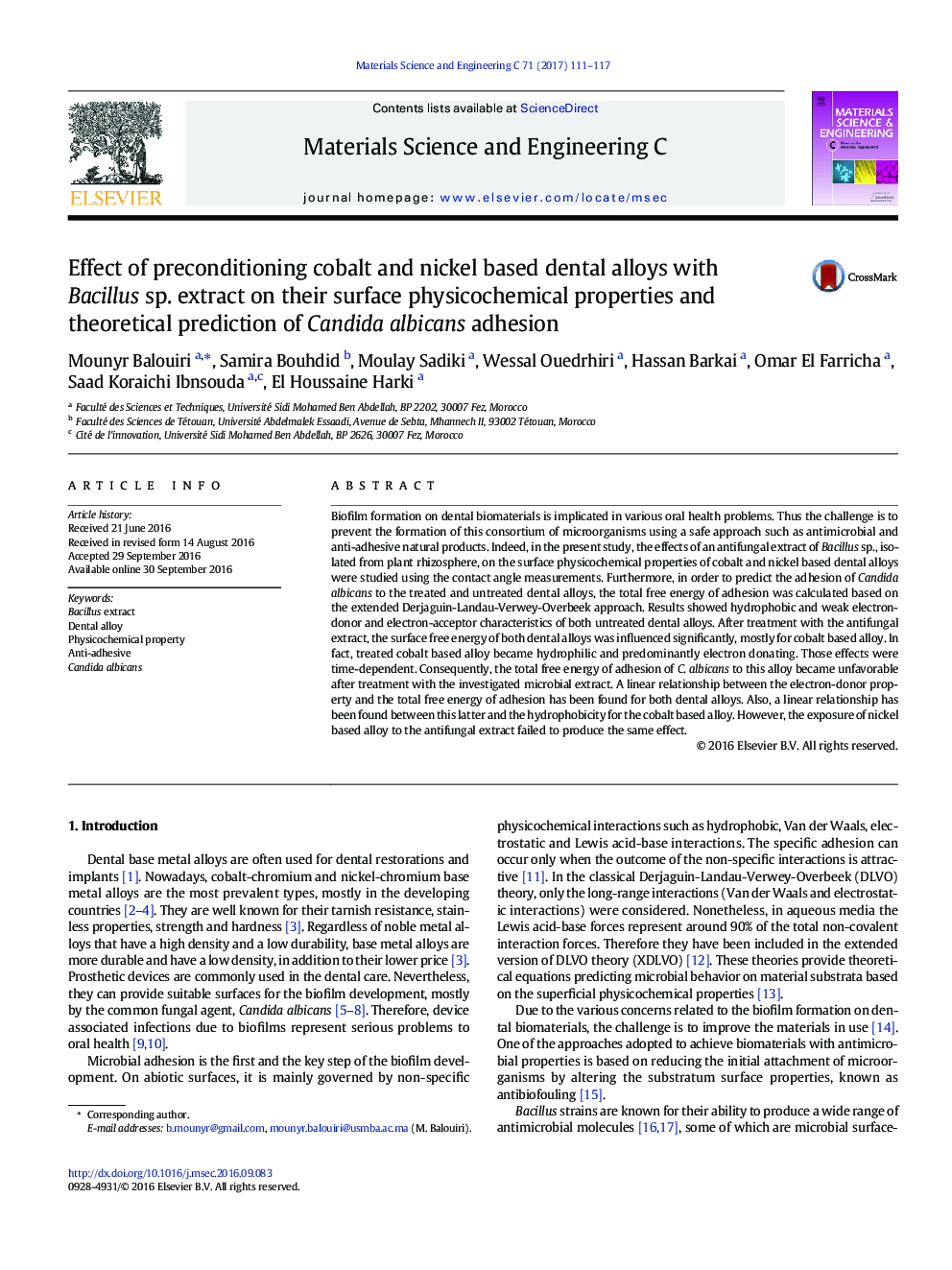| کد مقاله | کد نشریه | سال انتشار | مقاله انگلیسی | نسخه تمام متن |
|---|---|---|---|---|
| 5434612 | 1509150 | 2017 | 7 صفحه PDF | دانلود رایگان |
- Assessment of dental alloys physicochemical properties using contact angle method
- Evaluation for the first time of microbial coating impact on dental alloys surface
- Decrease of hydrophobicity of treated cobalt-chromium alloy with antifungal extract
- Increase of Lewis base property of treated cobalt-chromium with treatment
- Theoretically, the dental alloy coating unfavored the adhesion of C. albicans.
Biofilm formation on dental biomaterials is implicated in various oral health problems. Thus the challenge is to prevent the formation of this consortium of microorganisms using a safe approach such as antimicrobial and anti-adhesive natural products. Indeed, in the present study, the effects of an antifungal extract of Bacillus sp., isolated from plant rhizosphere, on the surface physicochemical properties of cobalt and nickel based dental alloys were studied using the contact angle measurements. Furthermore, in order to predict the adhesion of Candida albicans to the treated and untreated dental alloys, the total free energy of adhesion was calculated based on the extended Derjaguin-Landau-Verwey-Overbeek approach. Results showed hydrophobic and weak electron-donor and electron-acceptor characteristics of both untreated dental alloys. After treatment with the antifungal extract, the surface free energy of both dental alloys was influenced significantly, mostly for cobalt based alloy. In fact, treated cobalt based alloy became hydrophilic and predominantly electron donating. Those effects were time-dependent. Consequently, the total free energy of adhesion of C. albicans to this alloy became unfavorable after treatment with the investigated microbial extract. A linear relationship between the electron-donor property and the total free energy of adhesion has been found for both dental alloys. Also, a linear relationship has been found between this latter and the hydrophobicity for the cobalt based alloy. However, the exposure of nickel based alloy to the antifungal extract failed to produce the same effect.
247
Journal: Materials Science and Engineering: C - Volume 71, 1 February 2017, Pages 111-117
